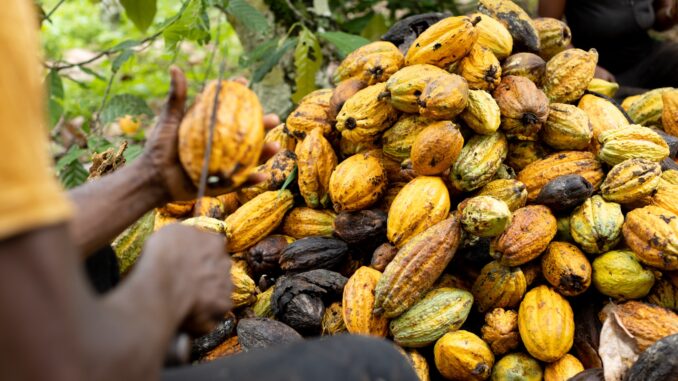
Ghana’s cocoa industry is facing a severe downturn as production figures reveal a staggering decline. With the harvest season nearing its end in June, cocoa output reached just 429,323 metric tons, barely half of the country’s average seasonal production. This shortfall has sent shockwaves through the global cocoa market, driving up prices worldwide.
The crisis isn’t limited to Ghana; neighboring Ivory Coast, the world’s largest cocoa producer, is experiencing similar challenges. Together, these two nations account for about 60% of global cocoa supply, making their production woes a matter of international concern.
Multiple factors have contributed to this decline, including adverse weather conditions, tree diseases, and the impact of informal mining activities. The illegal trafficking of cocoa beans across borders has further complicated efforts to accurately gauge production levels.
Ghana’s two primary cocoa-growing regions, Ashanti and Western South, have been hit particularly hard. The spread of swollen shoot disease and the lure of artisanal gold mining, locally known as “galamsey,” have drawn labor away from cocoa farming and devastated plantations.
This production crisis has left Ghana’s Cocobod, the nation’s cocoa marketing board, unable to fulfill its forward contracts with exporters and traders. While Cocobod officials remain optimistic about a rebound in the coming season, industry analysts view such projections with skepticism, given the magnitude of the current challenges facing Ghana’s cocoa sector.
